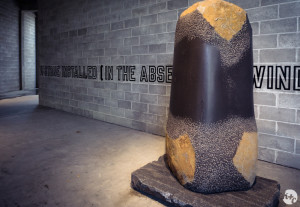I‘d been wanting to go to The Noguchi Museum since the first time I visited New York City in the early 1990s, but its Queens location was just far enough out of the way that there never seemed to be enough time to fit it in, and I always ended my trips declaring that I would go the next time I made it to New York. I’m pleased to say that, over twenty years later, I finally made the time; and yes, it was worth the wait.“You can find out how to do something and then do it or do something and then find out what you did.”
-Isamu Noguchi
Isamu Noguchi was born in the U.S. but spent most of his childhood in Japan, coming back to the States at age thirteen to finish school. He then began pre-med studies at Columbia University while taking sculpture classes at night. He eventually left Columbia to pursue life as an artist, and in 1926 he had a pivotal moment when he saw an exhibit by the sculptor Constantin Brancusi – a pioneer of the modern art movement – that would permanently change his artistic direction. He went on to move to Paris and spent two years working in Brancusi’s studio after which he split his time between New York and exploring the world.
Noguchi purchased the industrial building that now houses the museum in 1974 and used it as an office and studio before converting it into a museum in 1985, just three years before his death at the age of eighty-four. Noguchi’s work is decidedly modern and abstract, but still evokes intense emotion and a sense of history. Noguchi’s work is as much about the space around and between the works, as the works themselves. In Japanese, the term is ma, or negative space. Noguchi has said that the art of stone in a Japanese garden is the placement of that stone. Nowhere is this more evident than on the ground floor of the museum; these areas contain a permanent installation of works selected and arranged by the sculptor himself. The upper floors contain additional works from the permanent collection as well as temporary exhibits of work by other artists exploring similar themes and influences.
Isamu Noguchi may best be known for his sculpture, but he also worked with the likes of Martha Graham and Merce Cunningham doing set design. He also designed furniture and lighting. Some of these pieces, such as his coffee table, have become icons of modern design and are still in production today. Noguchi also did several large-scale public works projects including gardens, plazas, and playgrounds.
The Noguchi Museum is a peaceful, contemplative space away from the crowds and New York hustle bustle, allowing appreciation of that important space in-between. It’s worth the trek over to Queens – just don’t wait twenty years to visit.
 kimpluscraig.com
kimpluscraig.com





